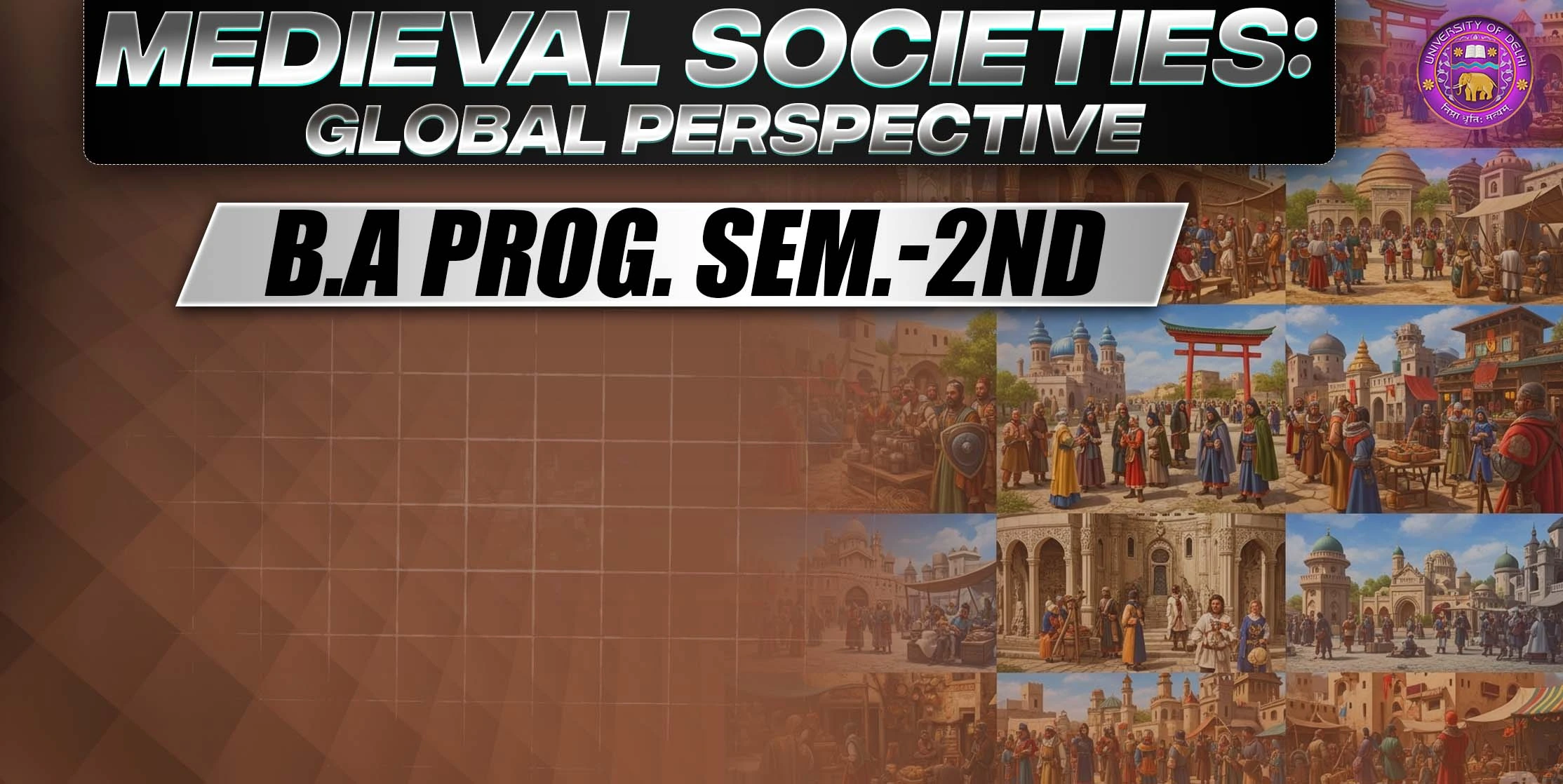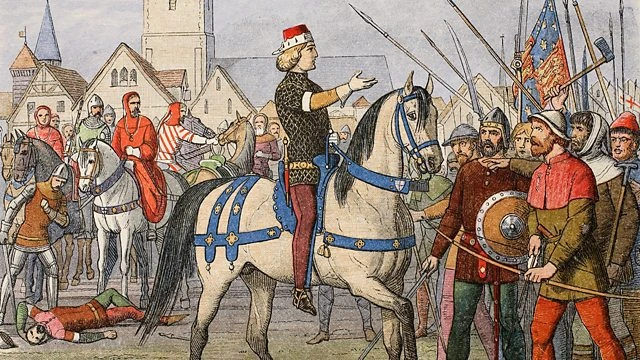
Get in Touch
We will get back to you within 24 hours.
Welcome to MVS Blog

Answer - INTRODUCTION
The term feudalism has been used by historians to describe the economic, legal, political, and social relations of medieval Europe. "It is derived from the German word" "Feud" "meaning" "a piece of land" "and refers to a society that developed in central France and later also in England and southern Italy." Many social and economic changes took place during this period, especially in Western Europe. During the Middle Ages, Western Europe developed a social system that was very different from the rest of the world. This is known as "ghosting."
THINKER’S VIEWS:
According to Webster, feudalism is a system in which local rulers exercise powers that accrue to the king, emperor, or any central power. Feudalism was a mixture of individual rule, a specific land system and individual dependency.
According to Henry Pirenne, feudalism was a closed system in which production was mainly for consumption and trade was almost non-existent.
THE RISE OF FEUDALISM IN EUROPE:
The beginning of feudal system in Europe is considered to be from fifth century. The feudal system in Europe lasted until the 5th century. This period is known as the Middle Ages in European history. By the 15th century, however, this practice had weakened considerably and soon the feudal system was abolished throughout Europe.
After the fall of the Roman Empire, feudalism emerged. After the fall of the Roman Empire, chaos arose in Europe. There was bloodshed and looting everywhere. In such a situation, the normal life of the European continent began to deteriorate. Seeing this kind of expansion of terrorism, people accepted the submission of a person who could protect them from these atrocities in order to protect their lives and property. All such people were given the title of feudal in that tyrannical era.
The powerful people whom the Europeans had sheltered, in course of time, became the owners of a vast territory and, being strong and prosperous, started to manage the security of the refugees. The burden of the orderly life of these subordinates also fell on these feudatories. Thus the feudal lords began to occupy an important place in the history of Europe.
CAUSES OF THE COLLAPSE OF FEUDALISM:
The development of feudalism has a long and complex history, and its decline has been a long process. The decline of communism has been a question of controversy among historians. Scholars believe that feudalism began to gradually decline in the 14th century and after some time this system was abolished from Europe. Some scholars believe that the re-emergence and growth of trade and the consequent growth of cities was the main reason for the decline of feudalism. Other issues such as the level of technology of other scholars, productivity in agriculture, demographic changes and changes in the rural landscape were responsible for the decline of feudalism.
1. Use of new weapons and ammunition
The use of new weapons and gunpowder also contributed significantly to the decline of feudalism. The feudal lords had built powerful forts in their respective territories, due to which it was not easy to defeat them and capture their forts, but the invention of gunpowder and its use in wars changed the status of the feudal lords. The kings established their own armies and equipped them with new guns and ammunition. The use of gunpowder made it easier to demolish and capture the powerful forts of the feudatories.
2. Increase in population
Neo-Malthusians in the 1960-70 s also interpreted the fall of feudalism in their own way. They believe that changes in population patterns led to the collapse of the feudal economy. He further states that population played a major role in the long-term change in the economic structure.
Emmanuel Le Roy Ladurie argued that agriculture was unable to bear the burden of increased population in medieval Europe. Along with the increase in population, the decline in productivity, fragmentation of holdings, fall in wages and increase in consumption led to an agrarian crisis. So famine in 1314-15 and plague in 1348-51 caused such havoc that a quarter of the population of Europe was wiped out. This upset the overall balance of medieval Europe and led to a further transition to capitalism.
3. Mutual conflict
One of the major reasons for the downfall of the feudal system was the interpersonal struggle of the feudal lords. Each feudatory had its own separate army, whose main purpose was to protect the country when needed. In medieval Europe, the king had no personal army of his own. When the situation of war arose, he used the combined forces of his feudatories. But they often fought with each other. The 'War of the Roses' in England is a direct example of this. The situation in France was even worse than in England. There was a constant interpersonal struggle among the feudatories, which not only caused loss to the country but also to their own power. Many feudal lords sold or mortgaged their lands to participate in the Crusades and to protect Christianity.
4. renaissance and reform movement
Social and cultural changes such as the Renaissance and the Reformation changed socioeconomic values and attitudes, leading to the decline of the feudal system. In the 14th century the wave of renaissance started in Italy and soon spread all over Europe. The movement propagated a new approach to society, politics and culture, replacing the traditional medieval worldview. Renaissance thinkers emphasized the importance of human reason, individualism, and education, which were at odds with traditional feudal values of obedience, hierarchy, and loyalty. The Renaissance also gave birth to new forms of art, literature and science that challenged the traditional feudal culture. The Reformation movement in the 16th century also challenged the Catholic Church as well as traditional feudal relations.
5. The invention of new weapons
On the other hand, the number of feudal lords was decreasing due to frequent wars and their social and strategic importance was also decreasing due to the invention of new weapons. Equestrian feudal lords fought with their spears, spears and swords and were therefore considered skilled in warfare. At this time the long bow began to be used. With this the archer-peasant also began to fight against the horse-riding feudal lords and from the social point of view the old primacy of the knight was now gone.
The second reason for the strategic superiority of these feudatories was that they easily protected themselves by staying in their formidable forts, but the Mongols brought gunpowder to Europe first and gunpowder shells began to be used in the Arab wars. It became easier to attack the feudal forts with ammunition, so now the vulnerability of the feudal forts was gone.
6. Farmers "protest"

One of the main reasons for the fall of the feudal lords was the revolt of the peasants. Over-exploitation of agricultural surplus by feudal lords adversely affected the farmers. Small and medium farmers were also affected because they were hardly left with anything due to the increase in the rate of surplus exploitation. According to Poston, half of the total produce was taken from the dependent peasants by the feudal elite. Along with this, the fertility of the land was also decreasing due to continuous agriculture because the farmers could not leave the land fallow for many days to get the fertility. Also, due to limited income of farmers, they could not spend on advanced seeds, fertilizers and technology.
7. Increase in trade
Belgian historian Henri Pitten attributes the decline of feudalism to the spread of trade and the rise of urban centres. The Crusades and new geographical discoveries brought the peoples of East and West into contact, leading to a revival of trade and commerce and the emergence of a new merchant class. This weakened the sovereignty of the feudal lords because the merchant class was not bound by the feudal system. The business environment was one of freedom and the feudal system one of discontent and narrowness. So, it was natural for both of them to fight. Some merchants made so much money in trade that they became richer, wealthier and more opulent than the feudal lords.
FEATURES OF FEUDALISM:
The political and administrative structure of feudalism was based on land grants and agricultural serfdom. Under this system, people from different sections of society used to bind themselves in a certain mutual relationship. This relationship was based on defence and service. The powerful section of the society took upon itself the responsibility of protecting the weaker section and the weaker section accepted to serve the powerful section.
Feudalism was a social, political and economic system of Europe, in which nobles, vassals and serfs in a hierarchical structure were tied in a complex relationship based on mutual obligations and services.
Feudalism in medieval Europe had three main characteristics: vassalage, protection, and sovereignty. The feudatories had large fiefdoms, which they received from the king in return for military service. Protection meant the protection of the landholder by the landlord, and sovereignty was the full or partial ownership of the landlord in his fief.
Feudalism was a medieval administrative and social system in which the king was legally the owner of all land and the land was divided among various classes of feudal lords and soldiers. Land was considered a means of wealth and property. The land distributed among the feudal lords was their fiefdom, in which they cultivated the peasants according to their wishes, collected taxes from them, received gifts and gifts.
In practice, the feudal lords held sway over their fiefs and exercised all the administrative powers that had previously belonged only to the kings. It was the responsibility of the feudal lords to maintain peace and security in their fiefdom and in return they collected taxes from the peasants.
CONCLUSION
It can be said that the feudal system of production in Europe had become dominant. The institutions of feudal polity, society and economy were classified along hierarchical lines. Despite the similarity in structures, there were differences in the development of feudal social structure throughout Europe. In this pyramid-like structure of power relations, land became the principal instrument for determining socio-political relations.
0 Response